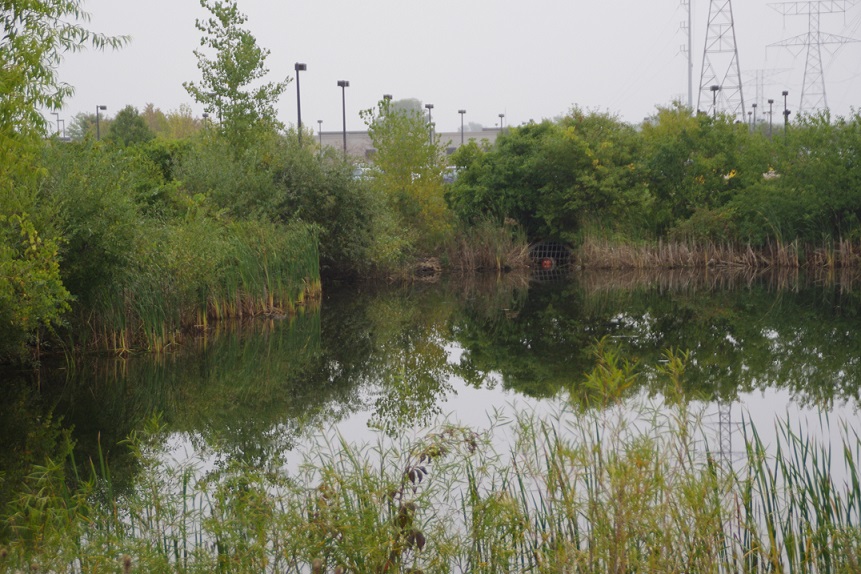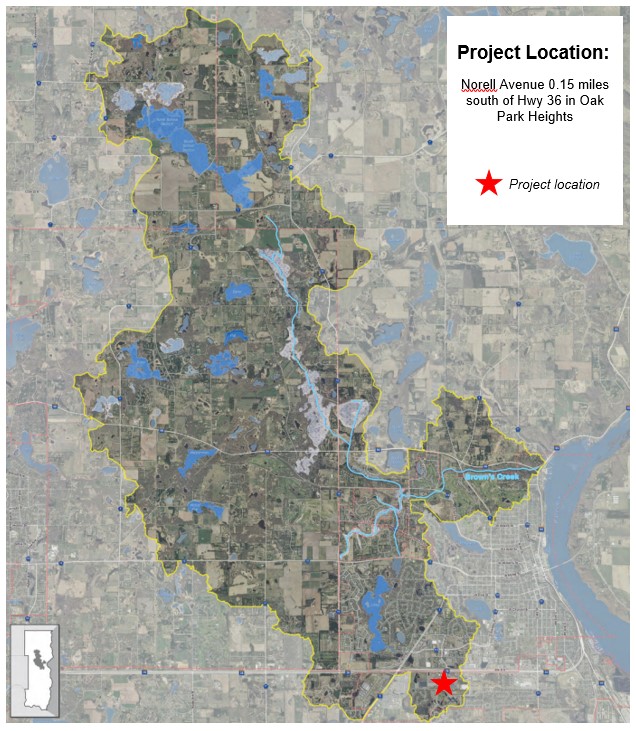BCWD received a 2015 Clean Water Fund Grant in the amount of $32,250 to partner with the City of Oak Park Heights to retrofit an existing stormwater pond to eliminate pond short circuiting and improve water quality in Long Lake. The project was designed in 2015 and will be constructed in 2016.
Long Lake is impaired for excess nutrients, making the water green with algae in the summer. Water quality monitoring data confirms that phosphorous is the limiting nutrient and is thus the focus of our targeted reduction. BCWD looked for possible projects to remove phosphorous before it gets to Long Lake. The Oak Park Heights retail area on the south side of Hwy 36 eventually drains to Long Lake.
An opportunity was found!
Stormwater ponds work by allowing dirty rain and snow melt to first collect and let the larger sediment (with a lot of nutrients and other pollutants attached) to drop out before the cleaner water flows on to our lakes and streams. The Norell Avenue stormwater pond was built before we knew as much about stormwater ponds as we do today (and before the BCWD existed). The inlet and outlet pipes for the pond are too close to one another. This causes short circuiting, reducing the amount of time the dirty water spends in the pond. The proposed project would increased that flow path by installing a vinyl sheet piling driven into the pond bottom. Of the several options to increase flow path, this is the most feasible without decreasing pond volumes and more cost effective than relocating the inlet pipe further from the outlet pipe.
What will the project do?
The water quality model shows that the proposed project will increase the pond efficiency by 15%, removing an additional 1 ton/year of total suspended solids and 3.8 lbs/year of total phosphorous from the pond. This pond is a part of a larger regional treatment train and the model shows that this one small project would still have a notable reductions within Long Lake of 200 lbs/year TSS and 1.2 lbs/year TP and increases efficiency of the entire system. As a part of the overall feasibility study, BCWD will also be working with a private business to better maintain their pond that has significantly reduced volumes, and discuss their willingness to participate in the project. This may increase the project benefits to 6.8 lbs/year TP reduction at Long Lake. This is all a big deal for Long Lake when you consider that 1 pound of phosphorous can grow about 300 pounds of algae!



